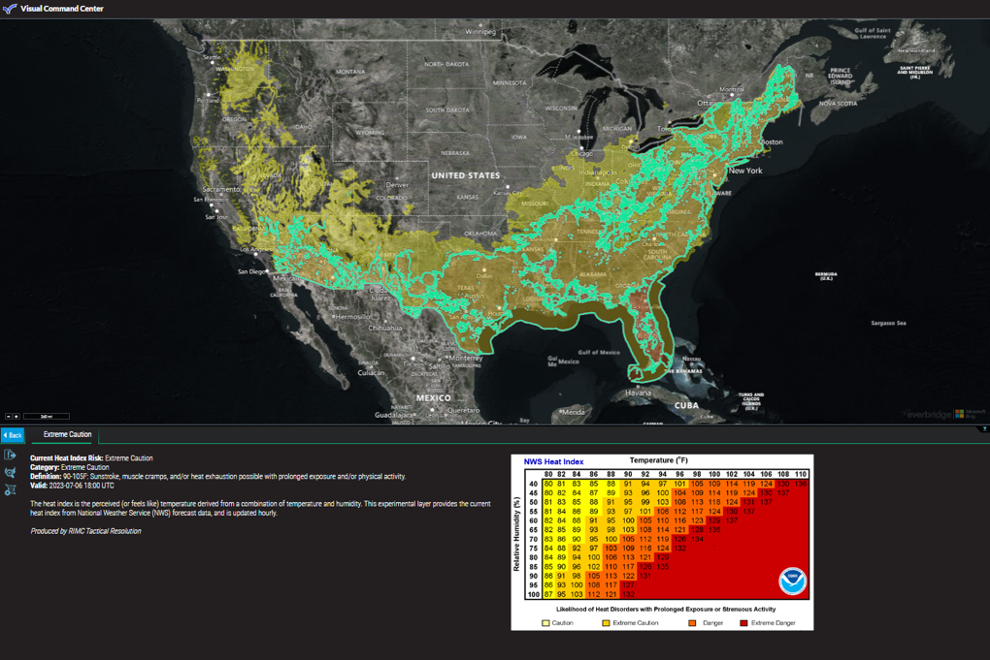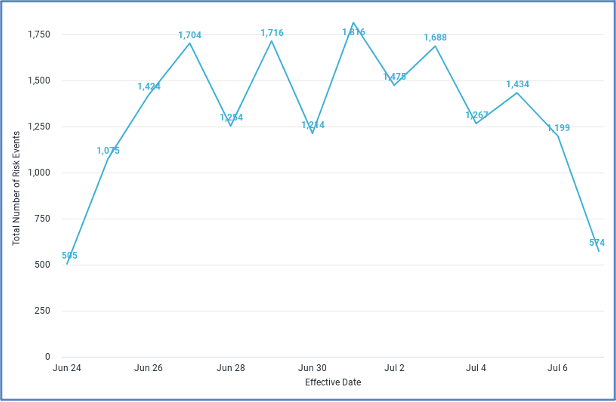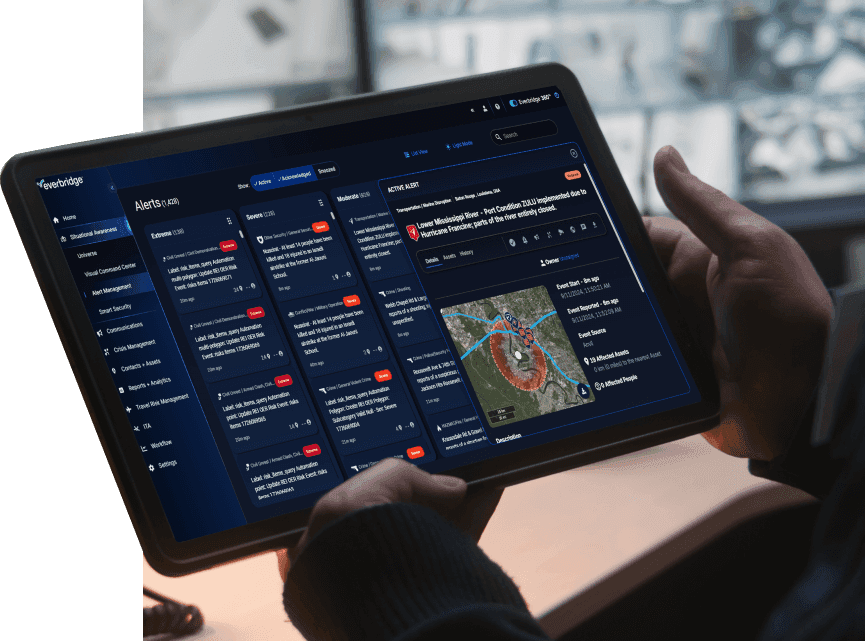A Q&A with Brian Toolan, Everbridge VP Global Public Safety.

Talk about the trend in heat events that are impacting state and local governments
Each year, we witness the challenges cities and towns face due to extreme heat. Some of the biggest areas of concern are the places that haven’t experienced such extreme heat in the past or for prolonged periods of time. In some areas, extreme heat is not traditionally an issue, but as the climate changes, we’re experiencing some of these extreme conditions entering areas that may be under-prepared to handle this new concern with the heat. As temperatures rise, and the humidity increases, air quality now becomes a big concern as well, and potentially even severe storms.
Air quality affects people with respiratory conditions. People who may not normally experience respiratory issues start experiencing issues due to poor air quality. This also results in more people becoming home bound because they struggle to breathe in extreme heat. That then morphs into more and more people turning on fans and lowering air conditioning units, increasing the power demand. This is where we begin to see rolling brownouts or blackouts because the utility company is trying to keep the power grid stable.
With power outages, you now have people who are oxygen dependent, who don’t have access to their oxygen because the power’s been turned off. There are also people who are on medication requiring refrigeration. The clock starts ticking on their medication shelf life, which increases stress and anxiety.
As you can see, it starts with the intense heat but quickly spirals into multiple sub-problems after that. The cause is the heat. The effect becomes the heat index, the air quality index, the power consumption problem, brownouts, and blackouts. So, you have this trickle-down effect since temperatures are elevating due to climate change. Areas across the world may not typically see these elevated conditions or may not normally experience these conditions for such a prolonged period. And we’re seeing those conditions further in the climates where it’s typically warmer anyway – it’s becoming a global concern that requires emergency managers to be prepared and have an effective communications and outreach plan.

Everbridge Visual Command Center (VCC) illustrates the Current Heat Index Risk on July 6, 2023, calling for Extreme Caution as prolonged high temperatures increase the risk of heat exhaustion and sun stroke.
What are you seeing state, and local governments do to be proactive here?
There are several actions that can be taken. Sometimes you’ll see businesses stagger work hours. Some employees may come in during morning hours, other employees during the afternoon hours, or more employees working remote for the duration of the heat wave. Why? They’re trying to conserve power. During a normal workday, you’ll require more air conditioning for larger areas. That also places more demand on the power grid. That leads to brownout and blackouts.
Second, emergency managers are opening cooling shelters, trying to get the homeless and vulnerable populations into areas where they’re not going to suffer from the extreme heat. By bringing in vulnerable people, people who have oxygen dependency for instance, they open the cooling centers so they can maintain a quality of life they’re used to. And those shelters may be running through the night if temperatures don’t fall during the evening hours.
Emergency managers will remain busy coordinating resources for the cooling shelters as well. Water and food may be needed for prolonged heat waves. Residents may experience medical issues as a result of the stress of having to relocate to a shelter and mental health may also create additional services.
And that creates other concerns – how do you know who needs sheltering? Emergency managers coordinate with social service agencies on vulnerable needs assessments, and outreach to the homeless. Who are those people who need shelter and how do you check in on them? I’ve worked with several municipalities where they perform daily health checks, send a message, ask if they’re okay, if they have any unmet needs. With polling, for example, you can press one for “yes.” Do you need someone to contact you? Press two for “no, I’m okay.” You can keep all that in our system and start to triage your needs assessments.
Now, as the ground heat and humidity continue to rise and meets the cooler air above, you start to get into the atmospheric level where it’s going to spur severe thunderstorms and possibly tornadoes, and so you may start to see severe weather warnings being issued.

Everbridge Resilience Insights showing the total number of Risk Events related to Air Quality, Heat, and Weather over 30 days in June – July, 2023.

Everbridge Resilience Insights showing the number of Alerts sent to residents related to Air Quality, Heat, and Weather over 30 days in June – July, 2023.
For emergency managers who aren’t equipped, and aren’t prepared to check on the most vulnerable, what is the checklist of things to get up and running so that you can communicate quickly when there’s an incident like this?
It begins by working with your public and private sector partners. Social workers, outreach groups, and the medical community. They can provide an understanding of who their clients are, who are most vulnerable, and how to contact them. With this information, you can put it into a notification system, and you can begin a communications campaign.
Additionally, setting up an online registration portal where people can go and subscribe to receive this information. Empower citizens to self-report their access and functional needs as well as their likelihood of relocating to a cooling center or shelter, and if they’ll need transportation. This information is especially beneficial during emergency situations and disasters by providing detailed information on the needs of your community.
In the end, success relies on your ability to also be inclusive to your community needs by understanding language barriers that might prevent people comprehending your communications which then prevent them from seeking shelter. If they don’t understand your communication, they won’t know where to go for sheltering. It’s critical to reach people with clear, actionable communication in the language they understand and can respond to. That’s a key focus in effective communications for any municipality.
Speak to an Everbridge Resilience Expert: To speak with Brian or a member of our Everbridge team related to managing heat events, please contact comms@everbridge.com.

